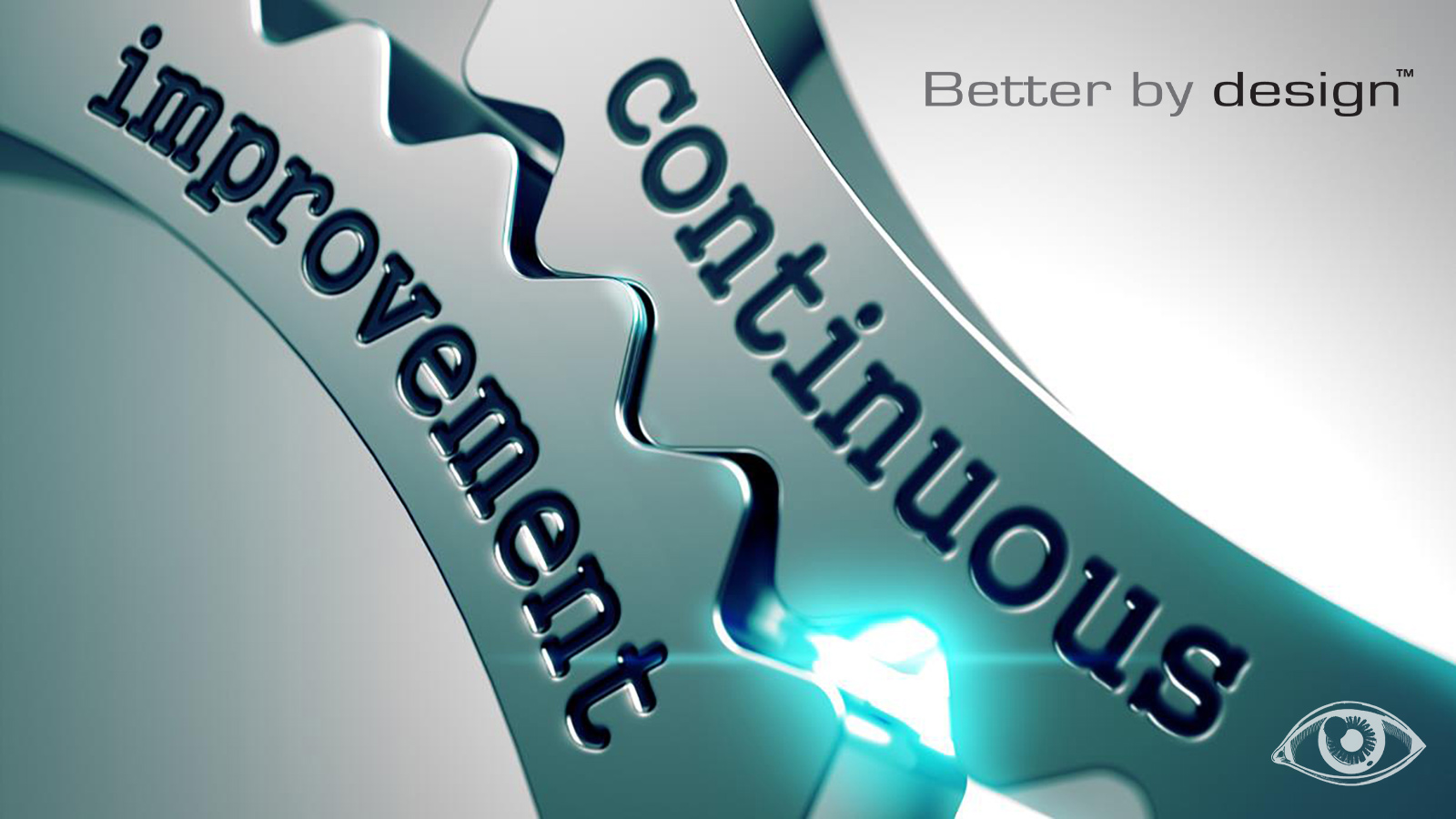Real results: 3 enterprise projects powered by Reliable Controls
Explore how our technology automates complex enterprise portfolios.





“A goal without a plan is just a wish.” The apparent simplicity of this aphorism from author Antoine de Saint-Exupéry could bely its importance. Even simple aspects of professional and personal performance require planning. Arriving at work in the morning or home again in the evening requires a plan. Many individuals successfully develop and execute plans for routine activities. But what about in the more important professional aspects of life and business? Are you truly planning to be successful? Have you formulated, and do you execute, a plan to get where you want to go?
Some of us remember when journeys, be they jaunts across town or road trips to the coast, required manual planning. It was necessary to determine where you wanted to go and then define the best route to get there. Today, planning a course for even complex trips can be largely automated, guided by global positioning systems and real-time course correction, making trips as efficient as possible with minimal effort. Unfortunately, there is not yet a dynamic automation system to make strategic business and process decisions as nearly mindless as it is to follow a navigation system in your vehicle or on a mobile device.
Of a similar mind to Saint-Exupéry, American college football player and coach Paul “Bear” Bryant said, “It’s not the will to win that matters. Everyone has that. It’s the will to prepare to win that matters.” Hope is not a strategy. As presented in the previous Insight installment, Lawrence Hrebiniak, emeritus professor at the University of Pennsylvania’s Wharton School, said, “It should not be a question of developing a strategy and hoping it works, but of developing a strategy and following a logical plan to reach it” (Economist Intelligence Unit 2013). A strategy defines a plan of action to achieve a desired outcome. But even an effective plan is often insufficient to sustain success.
For much of the twentieth century, coal miners carried caged canaries into mines to serve as sentinels. Being more susceptible to toxic gases such as carbon monoxide, a canary would fall ill before the miners were incapacitated. The canary was both a monitor and an early warning system of impending danger that enabled miners to plan for success.
Very few plans fail all at once. However, particularly in dynamic environments, even plans that are well-thought-out and properly executed can falter, resulting in reduced efficacy or sometimes outright failure. A common misconception is that planning is a one and done or a set it and forget it process. What is often lacking is a mechanism for continuous improvement. Process variables, internal and external influences, and team and stakeholder expectations are fluid. Even simple plans should be monitored for efficacy. Continuous improvement—not as an afterthought or quality control mechanism but as an integrated and disciplined cadence of execution—has been proven to be predictive of success.
Seventy years ago Dr. W. Edwards Deming leveraged the scientific method of hypothesize, experiment, and evaluate, developed by seventeenth-century scientist Francis Bacon (Ross 2013), to revolutionize the post–World War II Japanese automotive industry. His Deming Cycle introduced a four-step iterative procedure for the control and continuous improvement of processes and products. The results of this cycle have been referred to as “one of the most significant achievements of the 20th century,” and he is often called “the father of the third wave of the industrial revolution” (The W. Edwards Deming Institute n.d.). The Deming Cycle is also commonly referred to as plan, do, check, act (PDCA) to acknowledge each step in the process (Wuestman and Casey 2015).
In each iteration of the cycle, the planning process defines the journey. A productive journey often has a specific destination. In a process or business, the desired improvement or goal is analogous to the destination. What do you want to achieve or improve? Before embarking on even a short trip, people often determine the most efficient route to the destination. This is the foundation for a simple plan. In a business initiative, the first step of a plan is to envision the ideal result and articulate the criteria for success. Where do you want to go, and how do you know when you have arrived?
On a voyage the distance traveled is a common indicator of progress. Think of mile markers on a roadway or stations on a transit line. While executing a business or process improvement iteration, a key performance indicator (KPI) should be defined that can be measured to monitor progress. An easy-to-measure and understand KPI is often most effective. The KPI should directly indicate progress toward the objective. In day-to-day operation, the KPI should be the fundamental management metric used to define efficacy—to determine what works and what doesn’t.
To establish the most efficient route to a destination, it is valuable to consider delays such as traffic, congestion, and construction. Once the objective and metric for success are established, consider any threats and risks that could impede progress. When planning a trip with multiple options, it is similarly beneficial to ascertain the ideal mode of transportation—perhaps walking, driving, or taking transit. In like manner, a process plan should be rounded out with specific, actionable steps that are predictive of success and likely to advance the initiative.
The plan, encompassing the objective, KPI, and actions predictive of success, should be clearly articulated to all who can influence or are invested in the initiative, including team members, stakeholders, and even customers. Common understanding is fundamental to success. The likelihood of success is improved by taking the time to make certain everyone understands the plan.
This step is where the proverbial rubber hits the road. Once a route and mode of transportation are selected, it’s time to get moving. With a process plan in place, the next step in the cycle is to execute. Do the actions established in the plan and collect data as defined by the KPI. Particularly if this is not the first iteration of the plan, be particularly mindful of change efficacy; if you adjusted the plan from previous iterations, are these changes effective?
Sometimes journeys do not proceed as planned. Accidents, mechanical issues, and transit delays can impede the trip. If it appears the established plan is not going to get you to your destination, you might want to consider alternative arrangements. The same is true of processes. The third step of the PDCA cycle is to periodically check, or evaluate, the data collected during the do, or execution, phase. Based on the process KPI, what are the outcomes? Is quality above or below the desired threshold? Is the initiative performing better than or not as well as hoped? In execution, is the KPI an effective indicator of success? This periodic check empowers informed decisions. Should the process proceed according to the established plan, or is there an opportunity to improve it?
As Jerry Seinfeld observed, sometimes the road less traveled is less traveled for a reason. Through the course of a journey, acting on important lessons can improve present and future travels. For example, you learn which direction to travel or avoid during rush hour, which transit lines are punctual, or when to use or avoid specific airports. The act phase of the cycle is when a process is repeated or improved. Using the data collected from doing, and the assessment of checking, you can identify the areas of the plan that should be perpetuated and those that should be modified. If the process achieved the desired objective, make it a standard. If it did not, take the time to understand why, and act on the lessons learned to improve future iterations of the plan.
Another aphorism, often attributed to Benjamin Franklin, says, “A failure to plan is a plan to fail.” For coal miners, failure to plan was the difference between life and death. The previous installment of Insight proposed the importance of carefully crafted strategies such as SMART goals to the success of Reliable Controls and Reliable Controls Authorized Dealers. Success is not an accident, and it is rarely sustained without careful forethought and proactive planning. But a plan even well laid is seldom indefinitely effective. A process for continuous improvement is vital to sustainable success in a dynamic marketplace.
It is too easy to take an outward perspective on business and process journeys. We can become focused on the activities of peers or the vicissitudes of the market. The problem with this perspective is you have little or no control over the actions of other individuals, teams, and organizations. What you can most nearly influence are the actions of your team and yourself. Continuous improvement, as facilitated through processes like the Deming Cycle, allows you to be genuinely better by design™. Not better than a specific peer, product, or feature but constantly striving to be better tomorrow than you are today.
Few journeys worth traveling are simple. Few goals worth achieving are realized by accident. Some people focus on what they want to achieve and where they want to go. Others see only the obstacles that stand in their way—the reasons they can’t reach their destination. In many cases can’t is more properly phrased as won’t. Many who cannot succeed choose to not put in the work. Some honest self-evaluation might help you determine which type of person you are. Whether you are pursuing sales, business, engineering, or operational objectives, the ability to implement intelligent, agile, iterative planning that is powerfully predictive of success is entirely in your control.
Ross, Karyn. “PDCA: The Scientific Method or the Artistic Process?” The Lean Post, September 5, 2013.
https://www.lean.org/leanpost/Posting.cfm?LeanPostId=62.
The W. Edwards Deming Institute. “Deming the Man.” Accessed January 28, 2020.
https://www.deming.org/deming/deming-the-man.
Wuestman, Denis G., and Joseph E. Casey. “Lean Leadership: Coaching to Connect the Dots.” Strategic Finance, May 1, 2015.
https://sfmagazine.com/post-entry/may-2015-lean-leadership-coaching-to-connect-the-dots.
ID 45281354 © Photopal604 | Dreamstime.com
ID 60587119 © Constantin Opris | Dreamstime.com

Explore how our technology automates complex enterprise portfolios.

AHR Expo is always a highlight for the Reliable Controls team. Here's what we learned this year.

Learn how we're helping shape an industry where everyone can thrive.

Explore 5 inspiring education projects that showcase the power of people and technology you can rely on.

Read about three great sports and wellness venues enhanced by Reliable Controls technology.

Are you a school administrator or facility manager? A fully integrated Reliable Controls solution can empower you to offset your energy costs, create healthy classrooms, and safeguard occupants. Here’s how.

The future of building automation is here! Learn about Ethernet controllers, and discover how the RC-FLEXone will elevate your building’s performance.